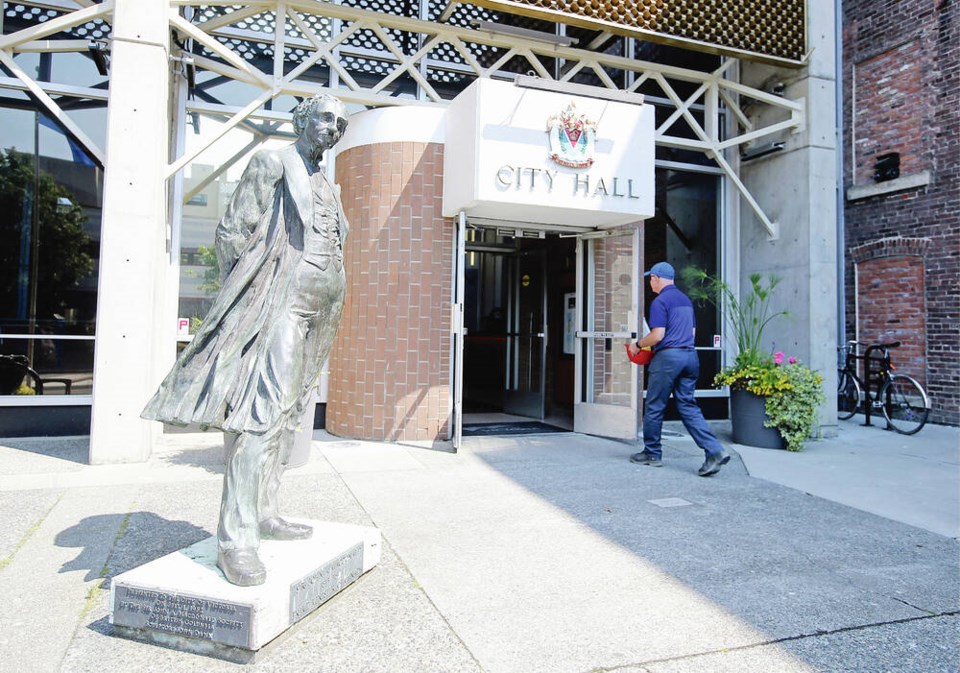Boxed up and locked away in a secure location in Victoria for four years, the controversial statue of Father of Confederation Sir John A. Macdonald could soon taste freedom before once again being locked away in a secure location on the mainland.
Next week, city council will consider a motion from Mayor Lisa Helps to return the statue, removed from the front steps of city hall in 2018, to the Sir John A. Macdonald Historical Society, the group that donated it in the first place.
“I think it’s the right thing to do,” said Helps, noting the city worked collaboratively with First Nations and the society on the issue. “The process has been really good and I think that it’s something that I imagine council and the public will support as well.
“The society has been very respectful of the reconciliation process and didn’t want the statue to become a lightning rod.”
The motion Helps is bringing to council on Thursday says that after consultation with the Esquimalt and Songhees First Nations, the city has agreed to return the statue and deliver it with its plinth to a facility in Ladner.
The return includes a series of conditions, which were proposed by the society.
Those include not displaying the statue on the Island without approval of the local First Nations, and without educational and contextual information concerning Macdonald, his policies and their consequences.
Chris Considine, a spokesman for the society, said it will now have to figure out what to do with the statue.
“I have no idea what they’re going to do with it — I think the society’s very sensitive to the need for reconciliation and healing,” he said.
At one point, the society was considering displaying the statue with an educational component looking at the good and bad of Macdonald’s life and time, alongside Indigenous art, Considine said.
“But I think that the discovery of the graves at Kamloops really raised a lot of concern for a lot of people,” Considine said — at that point, there was an understanding there was no desire for a statue of Macdonald to be erected again.
“The focus really has become reconciliation healing so that we can all, as members of this community, as well as across the country, move forward in a positive direction.”
Considine said the society has been around since the 1960s and was founded to commemorate Macdonald’s contribution to Canada as the first prime minister, bringing about Confederation and bringing a railway across the country. He was also the member of Parliament for Victoria from 1878 to 1882.
Victoria council voted to remove the statue of Sir John A. Macdonald as an act of reconciliation with the Songhees and Esquimalt Nations in August 2018. At the time, council cited Macdonald’s involvement in creating the residential-school system, which forced First Nations children away from their homes and subjected them to abuse.
The 635-kilogram bronze statue had been in place on the site since 1982. It was placed without consultation with the nations or the public. Since its removal, it has been held in storage.
In her motion, Helps noted that since the statue was removed, the country has entered a new era of reckoning with its history.
“Canadians are gaining a deeper understanding of our history, including wider-spread knowledge of the attempted cultural genocide of Indigenous peoples through the residential school system,” she wrote. “Since last summer, the historical figures responsible for designing the residential school system have come under deeper scrutiny as we learn more about our history as a country. Sir John A. Macdonald is one such historical figure.”
In an interview, Helps said when the city took the statue down, it was considered a controversial move, but since then, many other statues have come down across the country.
“So I think the original decision, while it was difficult for people to understand at the time, I think makes some sense.”



